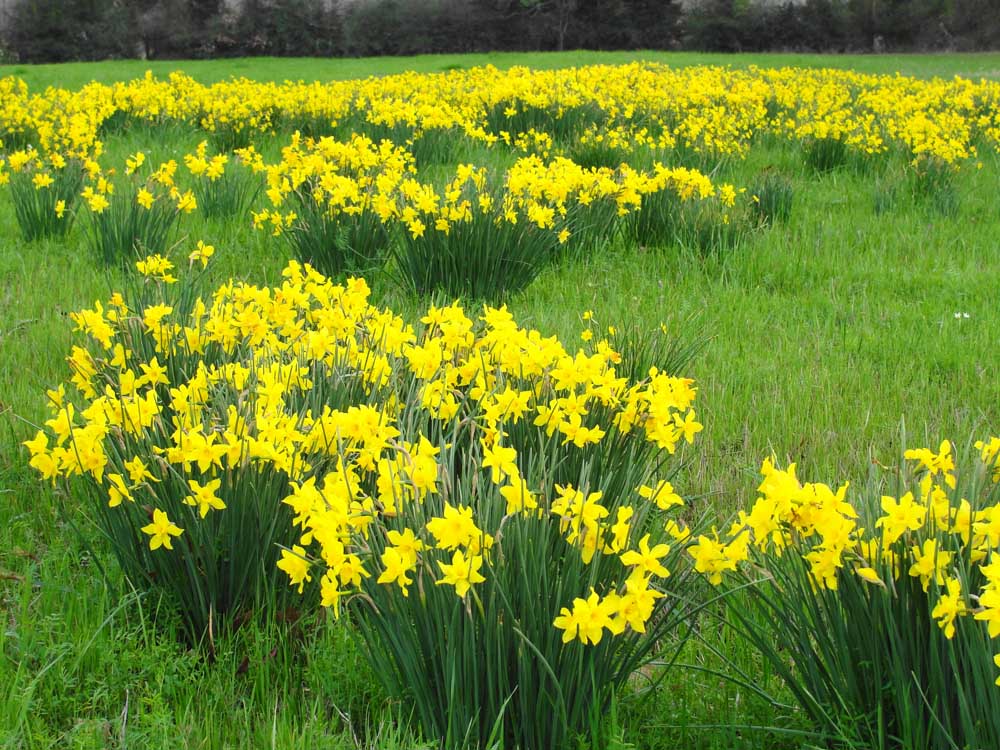Grant: Fragrant jonquils welcome spring
Published 5:00 am Sunday, March 2, 2025

- Jonquils are enduring fragrant spring treasures. (Contributed Photo)
I recently attended the annual Jonquil Jubilee in Gibsland, Louisiana, and helped lead tours viewing beautiful daffodils, narcissus, and jonquils. I love them all but have to admit I’m partial to the narrow-leafed, smaller flowered jonquils.
There’s something magical about the arrival of jonquils in East Texas. As winter’s chill begins to fade, these early-spring beauties fill the air with their sweet fragrance and brighten our landscapes with cheerful golden blooms. Jonquils are harbingers of spring and cherished emblems of old Southern landscapes.
In East Texas and across the South, jonquils thrive thanks to our mild winters and acidic sandy-loam soils. Unlike many modern hybrids that can be finicky in our mild climate, old-fashioned jonquils are time-tested performers, returning year after year with no fuss or fertilizer. Their charm, resilience, and intoxicating sweet fragrance make them must-haves for Southern gardeners.
Among the most beloved jonquils in East Texas are “Sweeties” (Narcissus jonquilla), “Campernelle Jonquils” (Narcissus x odorus), and “Texas Star Jonquils” (Narcissus x intermedius). Although smaller flowered than daffodils, each brings its own unique beauty and form.
Often simply referred to as jonquils, Sweeties are true Southern cuties. Native to Spain and Portugal, these dainty yellow blooms are famed for their rich, sweet fragrance. With narrow, dark green leaves and multiple small, golden flowers per stem, Sweeties are perfect for naturalizing in meadows, under deciduous trees, or along garden paths.
These heirloom bulbs love full sun to partial shade and require little attention once established. Their small, clustered blooms have graced Southern gardens for centuries, and their strong scent can transport you straight to memories of grandmother’s garden or an old family homestead. Being a wild species, they can naturalize from seed on sites with good soils and can even survive in moist conditions.
Campernelle Jonquils are perhaps the most iconic of all Southern jonquils. A hybrid of the sweet-scented Narcissus jonquilla and the larger-flowered Narcissus pseudonarcissus, these classics have been beloved by Southerners since the 1600s. With somewhat twisted golden-yellow petals, Campernelles carry the same delightful fragrance as Sweeties but offer larger, showier blooms in clusters of 2-3.
They are exceptionally hardy and thrive in the heat and humidity of East Texas and are perfect for naturalizing in meadows or alongside rural roads where they’ve often been growing for generations. Their ability to multiply over time means that once you plant them, you’ll enjoy their sunny blooms for decades in landscape beds and borders too.
A true heirloom treasure, Texas Star Jonquils are the result of an old cross between Narcissus jonquilla and Narcissus tazetta. With their star-shaped, primrose-yellow petals and highly fragrant blossoms, Texas Stars are cherished for both their beauty and their historical connection to Southern gardens.
Like their jonquil cousins, Texas Star Jonquils are easy to grow and perennialize beautifully in our region’s acidic soils. They offer multiple blooms per stem and their star-shaped flowers bring a sense of wild elegance to any landscape.
Jonquils thrive when planted in the later summer or fall in well drained sunny spots. Once established, they require little care, and their bulbs multiply naturally over time. They require absolutely no irrigation and rarely suffer from pests or diseases.
Heirloom jonquils are available from The Southern Bulb Company (southernbulbs.com) and the Smith County Master Gardeners’ annual October Bulb Conference and sale in Tyler.







